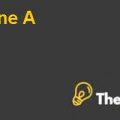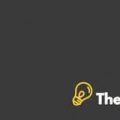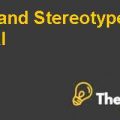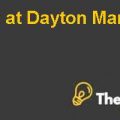
Hedging Currency Risk at TT Textiles
Case Questions
1. What is TT Textiles’ intrinsic risk posture?
The revenues of the TT Textile Company are mainly related to the exports. The percentage of revenue coming from the exports is 75% of the total revenue. Therefore, the 75% of revenue, which is US $25 million, is subjected to the currency risk known as translation risk. Current spot rate should have determined the current income based exposure if the rate was known.
Approximately all the organizations related the textile industry face the currency risk; the reason of this is the fluctuations between the INR and USD. The reason behind this is the industry is significantlydependent upon the export revenues and due to the increasing demand of the textile products globally; the companies in this industry arefacing more currency and translation risks.Currently, the total demand in textiles industry is $30 trillion.
Due to the significantly growing demand,the textile organizations are enjoying the growth in the exports and revenues and as a result of this growth; their currency exposure has also increased significantly. These factors include rapid increase in the overseas production costs, less labor costs in Asia, increase in technology, innovations, effective marketing strategies, more capital spending etc
Asian export firms in the textile market areexposed to many risks in the international as well as the domestic market of the textile industries. Geographical and economical changes may cause serious risks in this industry; for example the change in weather may adversely affect the crop of cotton, which is an important raw material of textile industries,due to which there will be high risks to the sales of the textile firms. Textile organizations face other types of risks; for example, increase in the raw material costs, changes in the supplier demands and their costs, and the most importantly currency risks due to fluctuations in the rate of their local currency and the currency of the country where the exports are made.
Textile companies with the sourcing currency of USD are highly sensitive to changes or fluctuations in the USD rates or the Euro rates and finally, those companies dealing with major exports in the textile industry are also exposed to the complex issues and risks associated with taxes.On average nearly 60% to 70% of the sales in this business are export based therefore; the degree for the risk exposure in this industry is far above the ground. This is an intrinsic risk posture which is basically faced by TT Textiles Company.
2. What type of hedge might make the most sense?
In late 2006, the Indian Rupeeappreciated against, Dollar which declined. As a result of this, the risk exposure faced by the firm in this industry was high since the extent of the risk increased significantly. During the year 2006, the exchange rate had reached a level of 45 INR/ USD. However, the bankers in India had forecasted by the beginning of the next future or the near future that theIndian Rupee would begin to appreciate against USD. Nonetheless, the exporting firms in the textile market such as TT Textiles Companyfelt insecure and were vulnerable to this depreciation of the dollar against the local currency.Due to which the exporting company lowered once the exports in dollars were translated to the local currency.
The main indicators or the factors that have been identified for the depreciating INR in late 2006 were not the global factors but they were mainly related to the investment flows of foreign portfolios that were flowing to India. As a result of this all the competitors of India were losing out as a result of this in the competition as compared to the other companies in the International markets. In such a scenario the most recommended hedge which would be the most appropriate for these companies is to hedge their position by locking in the most favorable exchange rates through the forward contracts.
The companies could lock in the most favorable exchange rate; for instance if they get a forward agreement with a forward price of INR 35/USD, then they should hedge their position by locking in with this exchange rate. In this way, the companies can save their exposure to fluctuations in the currency fluctuations and as a result,the companies could experience smooth cash flows. This was also the case in the year 2006 and most of the Textile companies used the over the counter derivative products in order to hedge their currency risks. Therefore, in line with the sales estimates in the year 2006 and late of 2006, the most recommended hedge option would be to enter into over the counter forward contracts, which would be modeled as described above...................
This is just a sample partial case solution. Please place the order on the website to order your own originally done case solution.











